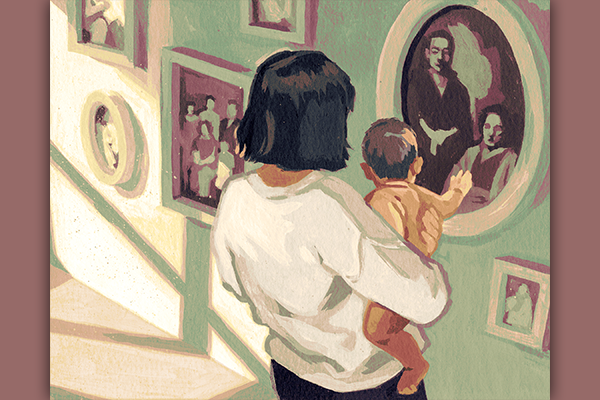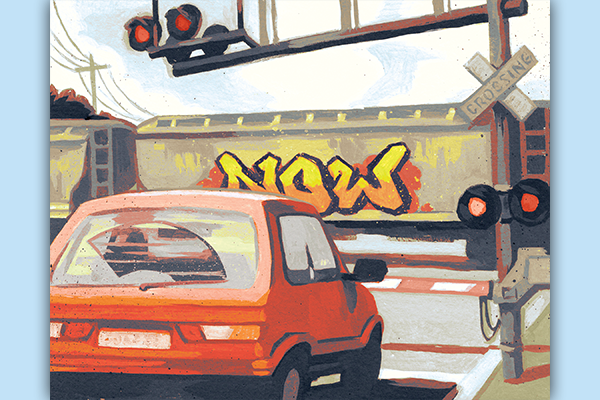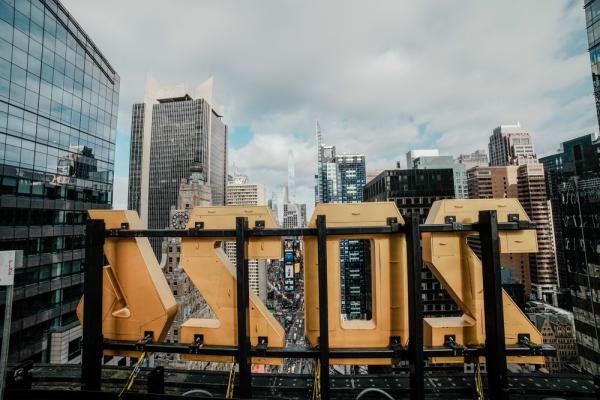My name is a reminder of who I am. In a deep and intrinsic way, it tells the story of the two worlds I inhabit. “Amar” – an Indian, Muslim name, given to me at a small orphanage in New Delhi. “Peterman” – a Dutch-Germanic name, my family name, a white name. Adopted from India and raised in the small, Catholic, Polish village of Pulaski, Wis., my early life was built around surviving in a white world as a brown body — finding my way as a dark kid in a sea of whiteness.
As one in a handful of minority faces in Pulaski, I tried to navigate my disoriented experience by finding my people, a community to belong to. My deeply loving family encouraged me to explore my Desi roots, yet I could not escape the dissonance of being caught between two worlds — one of my Indian heritage, and one of my white surroundings.
I studied theology, in part, to resolve this dissonance. Yet, at the white evangelical institution highly recommended by my Christian peers, I realized quickly I would not find answers of what it meant to be a minority in America. Instead, the solution offered was that if I truly wanted to follow Jesus and be accepted by my Christian community, I would have to surrender my questions of belonging in order to “find my identity in Jesus.” My salvation depended upon embracing whiteness and their white Jesus.
Although I did not have the words to articulate it, I had adopted the only Christian practice I knew — a conservative, white evangelicalism that had been self-baptized as the purest, truest, most faithful form of Christianity in our world today.
In my second year of study I experienced a theological rebirth through the mentorship of a second-generation Indian professor, one of the only professors of color in the evangelical institution. While I heard this professor went “against the grain,” I was drawn to study, for the first time, with a professor who looked like me. With his wisdom and knowledge, I began to connect the dots between the dissonance I felt as an adopted immigrant and the white world I inhabited.
After several years of study and relearning, I held the tools to critique my tradition as I bore the spiritual scars of breaking free from whiteness. Yet, this conversion didn’t change my location. I was still an Indian in a white, evangelical world, still caught in the homelessness of the in-between. But now I had a framework in which to place this white, evangelical theology and the practices it demanded of me.
In the past several years, I have met so many people who also live in the in-between: foreign adoptees, people of color, and second-generation immigrants in white neighborhoods. We all experience this disorientation of never being “home” in either white spaces or one’s ethnic community. We are simultaneously inside and outside of each community, imitating white normativity in order to maintain our audience with white communities.
I, and many others straddling two worlds, have struggled to find our voice in the current discussions surrounding race and social injustice. Many of us in the U.S. have not borne the weight of oppression placed on the Black community, nor have we fully benefited from the privileges offered to the majority of white Americans.
But I believe our in-between state is exactly where God has placed us as we seek to stand in solidarity with the Black community and advocate for our Black neighbors. We don’t need to deny our lived experience to fight for the oppressed and marginalized. Often, our experience and ethnic heritage offer us a deeper understanding of systemic racism rooted in our homeland. Systemic racism, segregation, and colorism are all international projects of caste, race, and power embedded into societies around the world. It is these very systems that leave children up for adoption, or lead families to immigrate to the United States. We carry into the in-between a heritage, an understanding that informs the way we understand America today.
Our position between our ethnic and white communities, carrying experience from both, actually offers us an opportunity in this cultural moment to stand with those under the weight of oppression in a way white Christians simply cannot.
Christians of color living in the in-between have a responsibility to educate our white brothers and sisters in a Christian faith that extends far beyond what the white imagination can perceive or articulate. Drawing from our non-white bodies, our heritage, and theological perspectives, we have a unique opportunity to speak the truth of God’s liberative justice with an accent that white Christians may understand and be receptive towards. Through shared space, we may bring discussions of race, Christianity, systemic injustice, and police brutality into white spaces and facilitate conversations in such a way that our white brothers and sisters can understand.
I acknowledge that for some, remaining in white spaces is too painful, traumatic, or unhealthy. These are all valid reasons to find different ways to advocate for systemic change. Recognizing this, I believe most inhabiting the in-between have been called into our white spaces in this cultural moment to reveal and dismantle structures of whiteness. Inhabiting this space is not not a project of tearing down our fellow believers; but rather, it is an opportunity to invite them into something so much better.
A part of this duty is recognizing how the Black community has historically been forced into white spaces to explain and recount (read: re-live) their experiences of trauma and racism. Unfairly, they have been forced to present arguments and statistics that validate their experience in our country. Rather than nourishing their own communities, Black leaders often are forced to cater to a white audience. For example, within the American church, Black Christians have become “unofficial racism consultant[s] to the white evangelical world,” teaching and equipping popular white pastors on the correct rhetoric to use before their congregations. We must be clear; this is not the responsibility of the Black community.
With this history in mind, I believe our greatest advocacy and solidarity with the Black community may be found in speaking in these spaces that Black bodies should not be forced to re-enter.
Although race has often been a point of contradiction for those living in the in-between, it has given us an opportunity to enter into these spaces that have historically burdened the Black community. An act of true solidarity from our specific position is to stand in these spaces as informed, educated persons of color, able to share our own experiences of racism and discrimination, both within and outside the U.S., that are often far less traumatizing and violent than those of the Black Americans.
In his book The Death of Race, Dr. Brian Batum describes this practice of solidarity and place-sharing as the project of embodied faith – one that can lead to a new Christianity in a racial world.
Living an embodied faith asserts meaning upon our bodies both as individuals, and in relationship to one another. This means that the places our non-white bodies inhabit tell a story in itself, just as God enfleshed “entered our lives, calling us from the tomb in which society has sought to confine us.” The shared space of believers living out the Christian faith in diverse, multi-ethnic communities is a witness to our world of the power of Jesus Christ.
We, as those living in the in-between, can practice an embodied faith by embracing where God has placed us. The tension between two worlds is often painful and exhausting, yet redemption may be found in utilizing our experiences with the white imagination to speak the truth of God’s liberation and affirm the worth and dignity of Black bodies in these white, conservative spaces that we, in part, call home.
Got something to say about what you're reading? We value your feedback!







